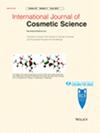Rising consumer demand for green cosmetics: The necessity of an ecotoxicological score in the cosmetic industry
Abstract
Objective
The increasing demand for eco-friendly cosmetic products, along with tightening environmental regulations, necessitates a comprehensive evaluation of the environmental impact of cosmetic formulations. This study aims to develop an ecotoxicological scoring system, specifically designed for cosmetics, to quantify the ecological risk of product ingredients. This tool will assist industry professionals in selecting ingredients with lower environmental impacts while complying with safety and sustainability requirements.
Methods
Key ecotoxicological parameters were assessed, including acute and chronic aquatic toxicity, biodegradability and bioaccumulation potential. Each ingredient's impact was evaluated using these parameters, and a scoring system was developed to simplify the interpretation of complex ecotoxicological data.
Results
The scoring system is based on a set of formulas designed to quantify the ecotoxicological impacts of substances used in cosmetic products. These formulas incorporate various ecotoxicological factors, including biodegradability, aquatic toxicity and impacts on the food chain. Each criterion is weighted according to its environmental significance, leading to a final score that synthesizes the potential harmfulness of a substance. While this model remains theoretical, it provides a solid foundation for rapid and reliable assessments of products in the design phase.
Conclusion
This ecotoxicological scoring system offers a new approach to assessing the environmental impact of cosmetics. It simplifies the decision-making process by providing clear and accessible data on the ecological risk of formulations. The application of this tool can lead to more sustainable product development and contribute to reducing the cosmetic industry's environmental footprint.


 求助内容:
求助内容: 应助结果提醒方式:
应助结果提醒方式:


